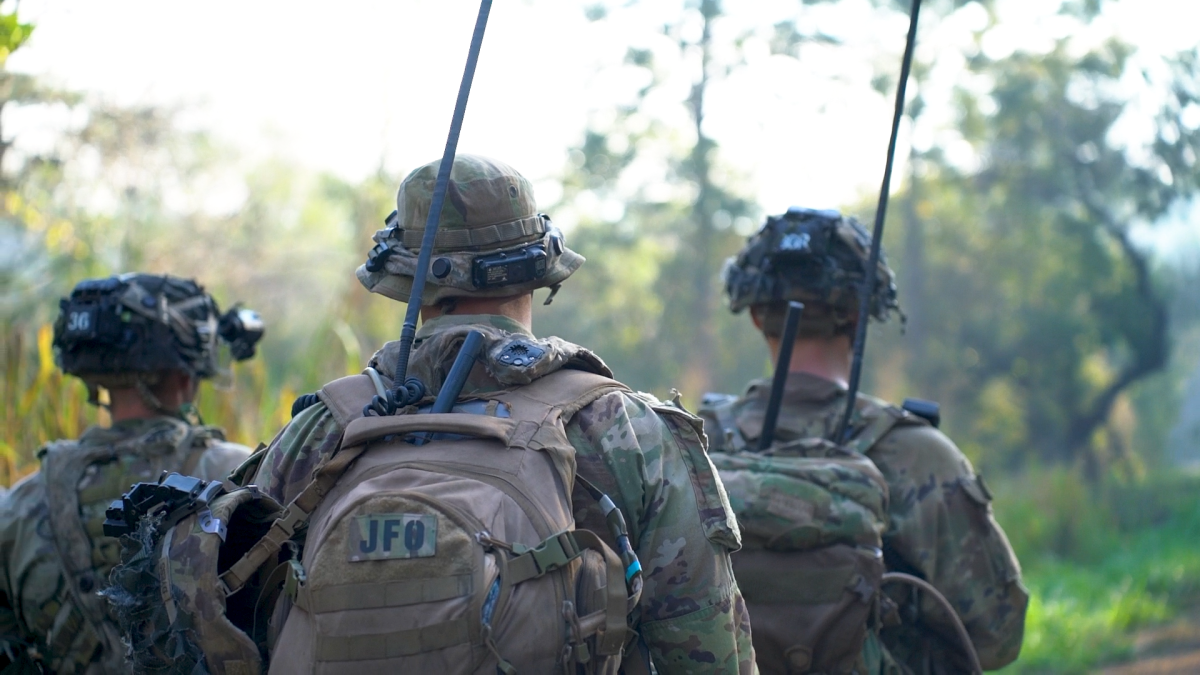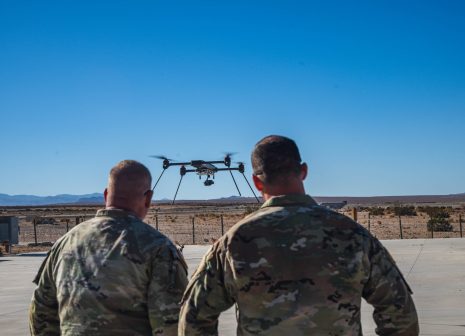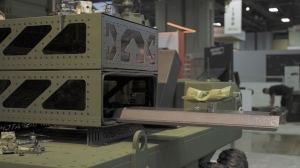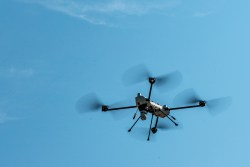Small drones allow infantry units to see farther on the battlefield

The proliferation and availability of small drones is allowing Army units at lower echelons to see and sense farther, negating the need for larger or more exquisite platforms or risking forward observers.
As part of a new Army concept, the 25th Infantry Division has been able to test new equipment that its commander said made it more lethal, agile and mobile.
“At a company level or even at a battalion level, they relied on assets predominantly from the brigade or higher level — assets that required sustainment and security,” Maj. Gen. Marcus Evans, commander of 25th ID, told reporters Friday. “Now we have small unmanned aerial systems in the hands of squad leaders that can see three to five kilometers from their current position, which allows them to understand the battlefield better, protect themselves and creates increased lethality from their overall awareness.”
These UAS provide smaller units the ability to project farther and find targets, making them more mobile. A key tenet of future battle is the ability for units to be more dispersed given the advanced technologies potential nation-state adversaries possess to track U.S. forces. Top Army officials have stressed that there is nowhere to hide on the modern battlefield anymore due to overhead imagery and advanced sensors.
“Before we would have to have a forward observer or some kind of higher-level ISR platform that is doing target identification,” Evans said. “Now, with the proliferation of those sUAS elements inside of infantry formations, you’ve expanded the number of potential forward observers to enable an indirect fire solution.”
The testing of these systems is part of the Army’s so-called transforming in contact concept, where more and more units are receiving newer technologies to experiment with. Under that concept, the service plans to use deployments and troop rotations to test new equipment — mainly commercial off-the-shelf gear — that could allow units to be more responsive on a dynamic battlefield.
Within the concept, there are three areas where Chief of Staff Gen. Randy George says the Army needs to be faster and more adaptable when it comes to delivering equipment to forces, due to how dynamic the threat environment is and the cat-and-mouse aspect of countering opponents’ moves: unmanned aerial systems, counter-UAS and electronic warfare.
“We acknowledge that the battlefield has changed, requiring the introduction of new technologies to increase lethality, agility and mobility,” Evans said. “All of the equipment that has come in, equipment that increases mobility and lethality and really allows us the ability to see further, to have better sensing mechanisms, better striking mechanisms, and then to be able to project force and protect the force.”
Units within the division have been receiving new tech and will test them in preparation for two culminating events: an October rotation at the Joint Pacific Multinational Readiness Center in Hawaii, followed by a deployment to Operation Pathways with the Philippines armed forces in spring 2025.
Receiving these capabilities early is critical to allow soldiers to become used to them and adapt them to warfighting.
“Watching them incorporate these new technologies at the earliest phases of training is really changing their mentality to integrate these additional assets to see further, to sense better, to strike further and protect the formation,” Evans said. “I am certain that our soldiers’ innovation and their ability to adapt the equipment to the environment is really going to come to the forefront as we start to enter the next phase of our collective training.”






